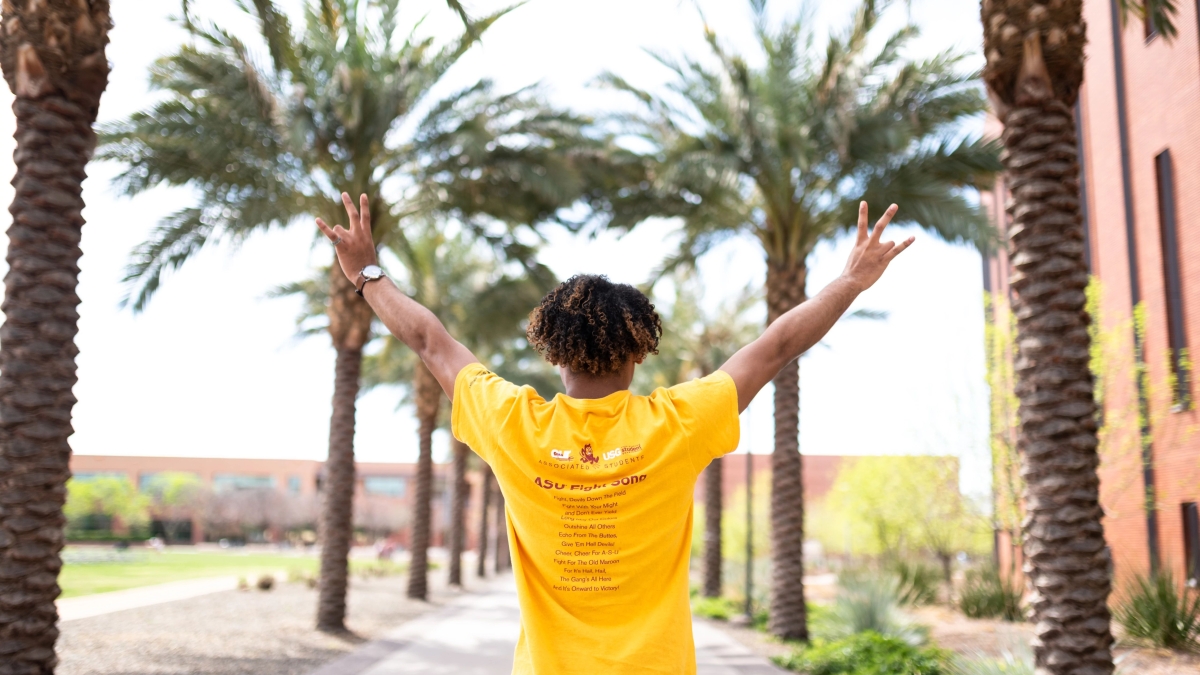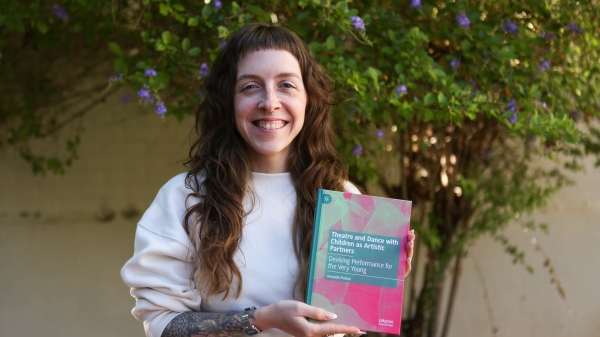Black Changemaker initiative to address economic disparities and empowerment

Though the Black and African American population has shown the highest percentage growth rate in Arizona, Black entrepreneurship, investments in Black-owned businesses and wages have not kept pace, according to the State of Black Business report.
That’s why local organizations are working with ASU to not only provide more economic opportunity for Black Arizonans but to also fill in workforce gaps to allow Arizona’s economy to keep growing. A collaboration between Arizona State University and Arizona Public Service, the State of Black Arizona, Black Philanthropy Initiative's Social Justice Impact Fund and the Greater Phoenix Economic Council will bring speakers and programming to Arizona to help grow the number of people from communities of color who are prepared to enter and succeed in an evolving workforce.
The March 2021 State of Black Arizona report found that although Black and African American Arizonans are a substantial and growing workforce, they are underrepresented in most industries in the state and overrepresented in the lowest-income earning brackets. The top five fields for Black and African American workers in Arizona are health care and social assistance; government; administration, support and waste management; retail; and food services. The COVID-19 pandemic has also exacerbated existing workforce inequities in Black and underrepresented communities through furloughs, job loss and economic disparities.
The Black Changemaker Series is a follow-up action from the State of Black Buisness report, and the event kicks off at 6 p.m. Wednesday, Nov. 17, at Pilgrim Rest Baptist Church in Phoenix. Maggie Anderson, author of “Our Black Year: One Family’s Quest to Buy Black in America’s Racially Divided Economy,” will be featured at the inaugural event to share about the economic impact of the Black community and how everyone can advocate for and support Black-owned businesses. Registration is open for both in-person and virtual participation.
Access ASU Coordinator Keona Gardner is an organizer for the event, which she said will be an engaging opportunity for the community to understand the power of investing in the Black community holistically to create economic prosperity in Arizona.
“We are so excited to have the Black business leader and author Maggie Anderson to kick off our first Black Changemaker Series. This could not happen without our amazing partners at Arizona Public Service, the State of Black Arizona, Arizona Community Foundation and Greater Phoenix Economic Council,” Gardner said.
A save-the-date registration is open for the second event in the series in February 2022, which will highlight the connection between educational attainment and economic and social mobility. A fall 2022 event is planned to focus on actions that individuals, organizations and businesses can take.
In addition to supporting the Black Changemaker Series, APS is offering internships, mentorship and a commitment to inclusive employment.
“APS understands that investing in the Black community is an opportunity to build on the cultural strengths that help Arizona thrive. APS is privileged to partner with ASU and our community partners to ensure a broader community impact,” said Shareé Hurts, APS strategic partnerships program manager.
ASU Assistant Vice President for Government and Community Engagement Kenja Hassan said it’s thrilling to see community partners committed to building a pipeline for diverse employees and mentorship of Black students.
“The multiple pandemics of COVID-19, economic distress and unexamined racism elevate the urgency of this speaker series and Maggie Anderson’s work,” Hassan said. “For more than a decade, ASU, APS and the Arizona Community Foundation have joined in partnership with the State of Black Arizona to support informed decision making with and for Arizona’s Black communities. Adding the Greater Phoenix Economic Council’s expertise can bolster economic empowerment in ways Arizonans have yet to imagine.”
Access ASU, which focuses on increasing access to higher education and preparing Arizona students for success, offers statewide resources to reach families and students with education, inspiration and tools to make degree attainment accessible. For years, Access ASU has offered summer camps, Future Sun Devil Family Day and other programs to reach underserved communities with resources for financial aid and more. Now, Gardner said that Access ASU is working toward creating deeper impact within the Black and African American community, including through the RISE Leadership Institute and a new ASU Preparatory Academy school opening on the campus of Pilgrim Rest.
The overall effort is a multifaceted approach to a multifaceted issue that can have a significant effect on not only individuals’ livelihoods but on Arizona’s economy overall, said Teniqua Broughton, executive director of the State of Black Arizona.
“Investing in Black Arizonans is critical to the future of Arizona’s economy. The Grand Canyon state cannot reach its full growth and development potential without understanding and acting upon the merits of inclusive prosperity,” Broughton said.
There’s still time to get involved. Register now for the Nov. 17 event. For media inquiries for Maggie Anderson, reach out to Teniqua Broughton at teniqua@stateofblackarizona.org.
More Arts, humanities and education

Exhibit to feature artwork inspired by oral histories from Arizona's oldest botanical garden
Though it is Arizona's largest botanical garden and has been an established touchstone of the community for more than 100 years,…

ASU center to host Spike Lee for Delivering Democracy 2025 program
The Center for the Study of Race and Democracy at Arizona State University will host Academy Award-winning filmmaker and cultural…

ASU professor explores theater, dance for young children in new book
Arizona State University Assistant Professor Amanda Pintore believes in the artistic capacity of very young children. She's…